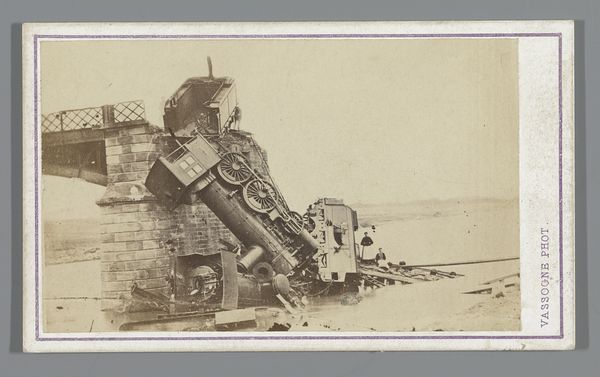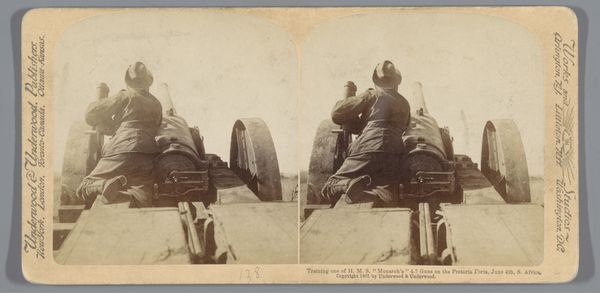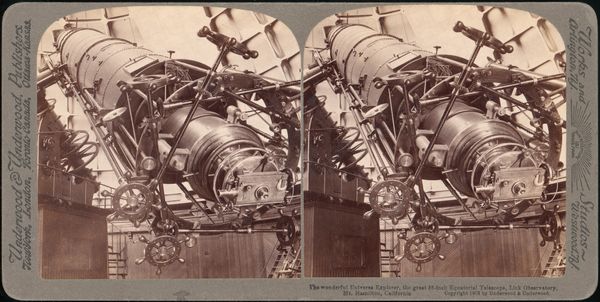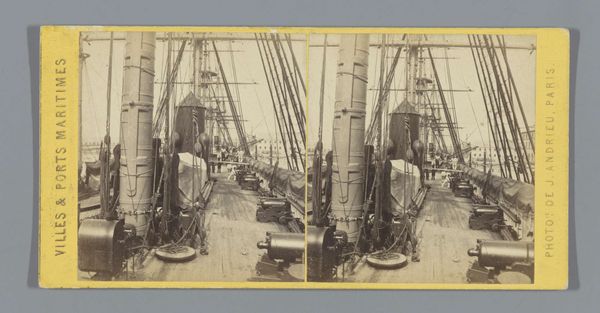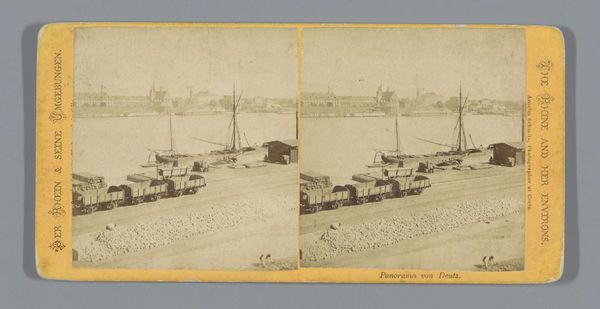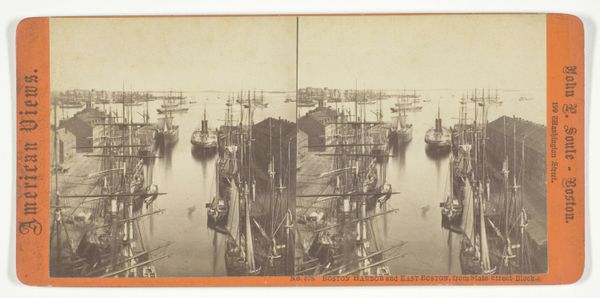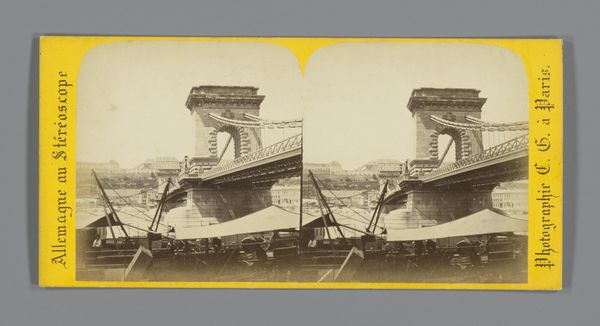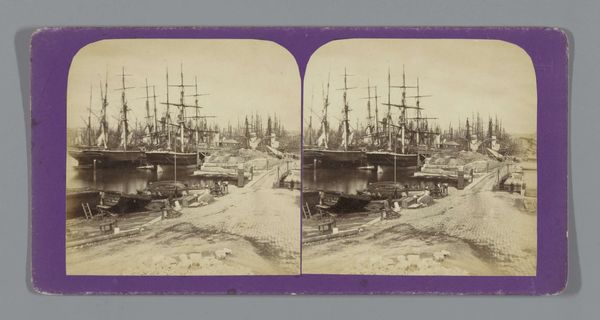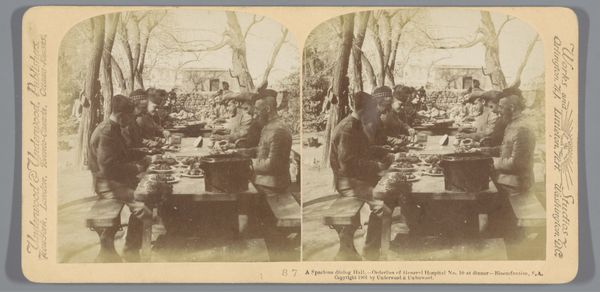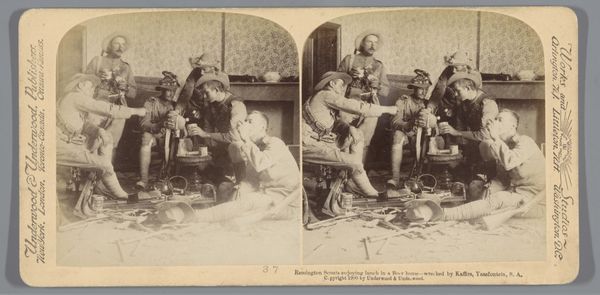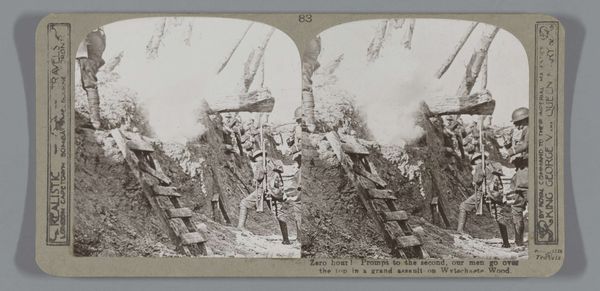
Sampson's Fleet. U.S. Battleship "Oregon", Forward Deck 1898
0:00
0:00
print, photography, gelatin-silver-print
# print
#
appropriation
#
landscape
#
photography
#
gelatin-silver-print
#
history-painting
#
realism
Dimensions: 8.2 × 17.7 cm (each image); 8.6 × 17.7 cm (card)
Copyright: Public Domain
Curator: William H. Rau's gelatin silver print, "Sampson's Fleet. U.S. Battleship 'Oregon', Forward Deck," made in 1898. It is currently housed at The Art Institute of Chicago. Editor: My immediate impression is one of controlled power and industrial might, frozen in a sepia-toned stillness. The detail is really fascinating—the sheer scale and materiality of the ship dominating the human figures on deck. Curator: Rau’s choice of the gelatin silver printing process provides this level of striking detail and tonal range, highlighting the complex arrangement of materials—steel, wood, canvas, even the sailors' uniforms. It prompts consideration of labor in ship building, the production, and its relationship with consumption of industrial commodities and expansionist political goals of the time. Editor: Absolutely. I'm thinking about the Spanish-American War context and how this image served as propaganda, celebrating U.S. naval power. It’s fascinating how this seemingly straightforward depiction of technology can also be read through the lenses of imperialism and the performative masculinity of the military. Curator: I agree. The repetitive use of industrial elements, such as the steel deck and barrels, illustrates a system dedicated to military function over aesthetics. I mean, while technically skillful, the photography’s goal is about documenting process. What was captured for use and construction over something more symbolic. Editor: Still, you can’t deny that there's a subtle narrative woven within that dedication to process. Notice how all the men are directed in one direction with intent purpose. Think, too, about access. This image flattens the hierarchy on the ship, it gives us all access as an audience to view and participate, no? What does this flatten power structure serve if not as another political point? Curator: True, though my perspective makes me question what type of process in ship travel do we have now? Do the changes change what we're consuming on a material level? I do wonder… Editor: I see your point. It brings us to bigger conversations about what progress can achieve through conflict and colonialism and war and for whom. It’s the kind of piece that constantly reveals new layers.
Comments
No comments
Be the first to comment and join the conversation on the ultimate creative platform.
